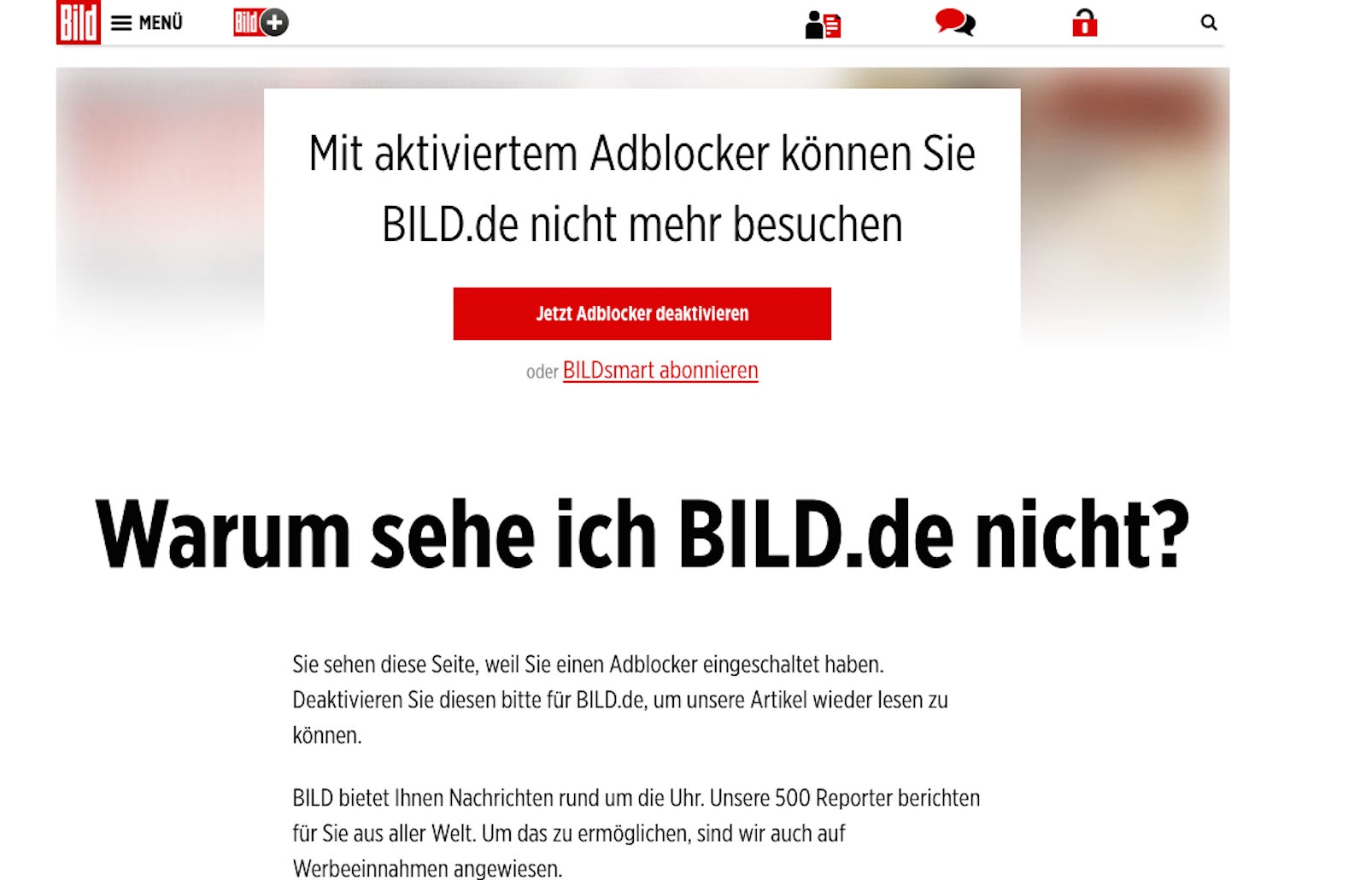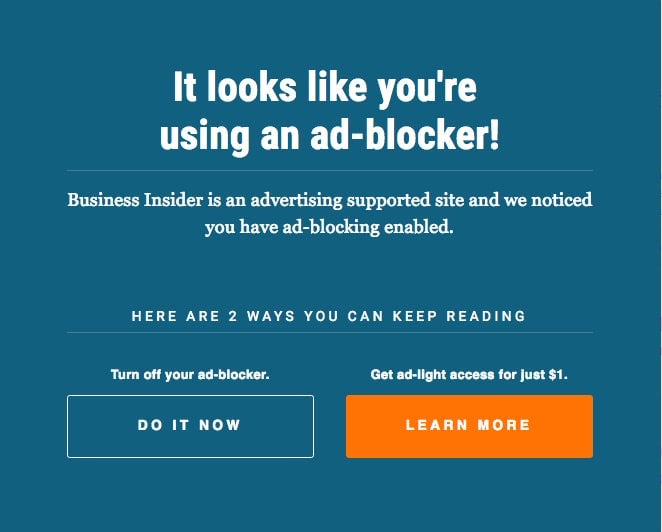The EU is totally fine with with publishers blocking ad blockers
The European Commission is about to make a lot of publishers very happy (paywall).


The European Commission is about to make a lot of publishers very happy (paywall).
Sweeping online-privacy regulations went into effect in the EU last year that gave users more control over their data. But the new rules, which required websites to get user permission to ”access” devices, also appeared to make anti-ad blockers illegal, according to some privacy activists. Online publishers use anti-ad-blocking software to track whether visitors are blocking digital ads and thwart them from doing so. Privacy activists reportedly argued (paywall) that this constitutes “access” and therefore violated the EU’s digital policy.
The European Union’s governing body is now saying that’s not the case. To clear up any confusion, it announced a proposed reform of the law on Jan. 10 that would make it clear websites don’t need consent to detect ad blockers on users’ devices. As the Commission wrote in a press release”
Users have the freedom to install software on their devices that disables the display of advertisement. At the same time, the Commission is aware that “free” content on the internet is often funded by advertising revenue. Therefore, the proposal allows website providers to check if the end-user’s device is able to receive their content, including advertising, without obtaining the end-user’s consent. If a website provider notes that not all content can be received by the end-user, it is up to the website provider to respond appropriately, for example by asking end-users if they use an ad-blocker and would be willing to switch it off for the respective website.
In other words, if users have the right to block ads—a major revenue stream for many websites—publishers should, in turn, be allowed to ban users from blocking ads. Some sites, including Wired, Business Insider, and the German tabloid Bild, already do this, and there are companies, like Sourcepoint and PageFair that help digital publishers implement these anti-ad-blocking measures.
If a user visits these sites while using an ad blocker, they’re normally confronted with a message overlay that says something like, “We’ve noticed you’re using an ad blocker. To keep reading, turn off your ad blocker, or subscribe to our ad-free service.”

Wired, which implemented this practice last February, said at the time that 20% of traffic to Wired.com came from users who were blocking ads. The New York Times reported in 2015 that 77 million people in Europe (paywall) used ad-blocking software, citing data from PageFair and Adobe. And eMarketer estimated that 70 million US internet users—or about a quarter of all internet users in the country—would use technology to block online ads in 2016.
The phenomenon is estimated to cost digital publishers $27 billion by 2020, according to Juniper Research.